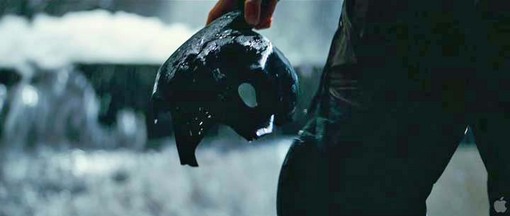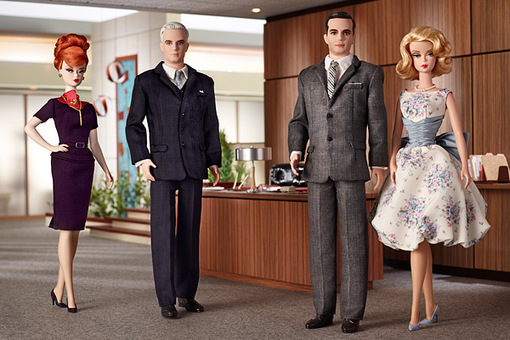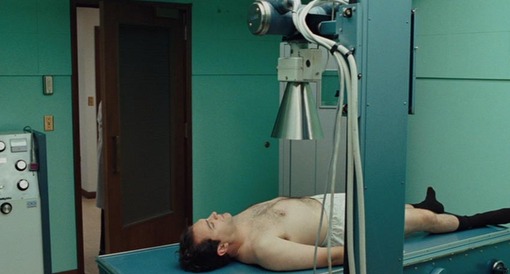The Shamus, Mr. Shoop, & blogger catch-up
Pop quiz!
I’ve spent the summer going to cardiologists and gastroenterologists, how about you?
I like a hemochromatosis screening in June
How about you?
I dig a cardiac catheterization balloon
How about you?
I love an MRI
And a CAT scan, too
I love endoscopies
Holter monitor EKGs
How about you?
Oh, it’s been fun, fun, fun till the doctor takes the Ambien away! Unfortunately, I couldn’t come up with a good rhyme for “ventricular tachycardia” that scanned. “Gastric carcinoid” is also tough. But I’ve really had all those things — and a colonoscopy and seborrheic dermatitis and daily zombifying doses of Coreg and more — just since May! Unfortunately, this has put me far, far behind in my movie blog coverage.
For example, did you know that the terrific critic Michael Atkinson, late of the Village Voice, has joined the blogosphere? Welcome, Michael! You’ll find him at Zero for Conduct.
And, weeks ago, TLRHB, the splendid blogger formerly known as That Little Round-Headed Boy, transformed himself into The Shamus over at bad for the glass: a culture blog. The Shamus writes about noir and “Chinatown,” of course (BTW, I own the domain name badforglass.com — and egbertsouse.com and sitonapotatopanotis.com, too, for that matter), movies, records and record covers, television, cartoons, and all forms of pop culture. I’d love to link to a favorite post or two but… I can’t. As The Shamus explains:
If you like a post, copy it today. It may not be here tomorrow. The Shamus doesn’t play by the blog rules. The template will change. Often. No archiving. One other thing: I don’t roll on Shabbas. And Walter, will you put down the god-damned gun?I’ve been meaning to link to this post by the invaluable girish (The Cinema in Your Head) since the end of May, but where does the time go? Who knows, maybe one day I’ll even get around to writing about it myself.
Our beloved David Bordwell has a wonderful piece about the tactile pleasures of studying films frame-by-frame — not on DVD, but on archival equipment that encourages the practice of Watching movies very, very slowly. A snippet:
Viewing on an individual viewer has both costs and benefits. Sometimes details you’d notice on the big screen are hard to spot on a flatbed. But with your nose fairly close to the film, you can make discoveries you might miss in projection. (Ideally, you would see the film you’re studying on both the big screen and the small one.) In addition, of course, you can stop, go back, and replay stretches. Above all, you get to touch the film. This is a wonderful experience, handling 35mm film. Hold it up to the light and you see the pictures. You can’t do that with videotape or DVD.And because it’s summer quarter, our Man For All Seasons, the fantastic Dennis Cozzalio at Sergio Leone and the Infield Fly Rule, has posted another pop quiz: Mr. Shoop’s Surfin’ Summer School Midterm. Questions this time around include:
2) A good movie from a bad director
6) Best movie about baseball
7) Favorite Barbara Stanwyck performance
8) “Fast Times at Ridgemont High” or “Dazed and Confused”?
13) “Salo: The 120 Days of Sodom” — yes or no?
20) Name a performance that everyone needs to be reminded of, for whatever reason
Oh, and so much more. PLUS two extra credit questions suggested by recent posts at Scanners!
Also, for a taste of the best of past quiz responses, be sure to sample Professor Corey’s Honor Society, Part 1, Part 2 and Part 3.
And do not neglect to read Dennis’s defense/appreciation of Martin Scorsese’s misunderstood magnum opus, “New York, New York.” As I posted in the comments section: “New York, New York” (after the “Happy Endings” sequence was restored) is a masterpiece. I think it would make a nice (loooong) double-bill with “La Dolce Vita” because both movies are about performance — creating scenes, playing to the crowd, adopting roles, in public and in private. Those brutal hyper-emotional Scorsese confrontations against mockingly artificial backdrops — genius. And your selection at this time is a fine tribute to the recently departed Laszlo Kovacs, whose fluid “NY, NY” camerawork is positively musical.
* * * *
I’m mad about polyps
Can’t get my fill
Needles in fingertips
They give me a thrill
Holding breath for the ultra-sound
Pooping in Sensurround™
May not be new
But I like it, how about you?





